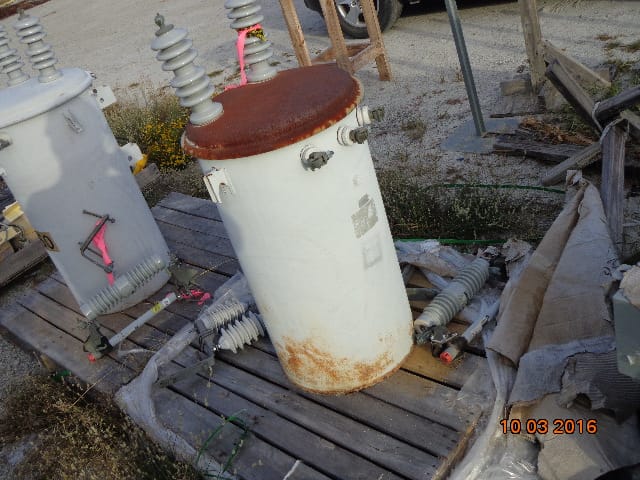State of South Carolina vs DOE: case based on federal on law requiring removal of plutonium from SRS due to MOX program’s collapse and failure – next filing with federal court in Columbia, SC due on January 13, 2017
The federal court case brought by the State of South Carolina demanding that DOE is obligated to start removing plutonium from the Savannah River Site remains active. During much of 2016, there was a back and forth between the plaintiff (State of South Carolina) and the defendants (DOE & its National Nuclear Security Administration) about the status of the case. The case is based on a law that requires DOE to begin removal of 1 metric ton of plutonium by January 1, 2016 given that the MOX project has failed. The law requires payment to the state of $1 million/day, up to $100 million/year, for failure to meet plutonium removal milestones.
On December 19, 2016, Judge Michelle Childs ruled that the plaintiff has until January 13, 2017 to file a response to the defendant’s motion
Other recent filings in THE UNITED STATES DISTRICT COURT,
DISTRICT OF SOUTH CAROLINA, AIKEN DIVISION in the MOX Failure lawsuit:
DEFENDANTS’ OPPOSITION TO SOUTH CAROLINA’S MOTION FOR RECONSIDERATION, December 16, 2016
JOINT MOTION FOR EXTENSION OF TIME, December 16, 2016
Court ORDER AND OPINION on Defendants’ Motion to Dismiss, October 31, 2016
“$100M fine starts over in South Carolina legal battle over MOX at Savannah River Site” – Aiken (South Carolina) Standard, December 31, 29016 – linked here
Stay tuned for the filing by the state on January 13 and what happens next in the MOX failure lawsuit. If another hearing is held, SRS Watch will plan to be there. Get in touch with SRS Watch for more court documents: srswatch@gmail.com.
photo provided to SRS Watch: citizens outside federal court in Columbia, SC at MOX Failure hearing on June 30, 2016; can used with this credit: “©2016 Sierra Club & Carolina Peace Resource Center”
—–

NNSA gave SRNS a bonus of $15.3 million, 84% of the total amount it could have earned. A sweet gift, you may say, from the US tax payer to SRNS. A hearty “thank you” is in order but we haven’t yet seen that.
See the SRNS bonus fee narrative, released on January 3, 2017, and linked here.
So, where is the FY 2016 bonus fee for MOX Services, which is mismanaging the MOX scam at SRS? Every year DOE is afraid to post this and every year we file a Freedom of Information Act request for it – like we did on December 13, 2016. You might think they have something to hide about the MOX boondoggle, wouldn’t you?!
—–
January 3, 2017: Two federal court cases related to MOX fraud are continuing – how much more fraud has there been and what is the status of investigations into that?
1. “Wire fraud” case involving claim for reimbursement based on false receipts
See South Carolina federal attorney’s news release -“
Two Men Charged With Wire Fraud“ – charges brought against Aaron Vennefron of Hamilton, Ohio and Phillip Thompson of Augusta, Georgia – December 16, 2015 – linked hereNote that there is hope that the feds are engaged behind the scenes on various levels in MOX fraud cases: “
The case was investigated by Special Agents with the U.S. Department of Energy Office of Inspector General and the Federal Bureau of Investigation. Assistant United States Attorney John Potterfield is prosecuting the case.”See latest court filing of December 22, 2016 – extending case into the South Carolina federal court’s March 2017 session – linked here
2. Case for unqualified rebar supplied to MOX project in 2007-2008 – case brought by former MOX worker in N. Georgia federal court under False Claims Act – receipt and installation of this rebar caused major delays and cost increases – did MOX Services pay for those increases or did the tax payer get stiffed?
See initial filing under False Claims Act – linked here
See latest filing extending filing date to January 9, 2017 – linked here
Why was MOX Services allowed to be excluded from the case by the federal attorney? The False Claims Act case originally included them as having allowed an unqualified vendor to be used to supply rebar below required NQ-1 standards. A hint of collusion by MOX Services still hangs heavy in the air….
“Trial delayed in multi-million-dollar Savannah River Site MOX fraud case” – Aiken (South Carolina) Standard, January 6, 2017 – linked here
—-
This MOX plant waste will be good for gag gifts thoughout 2017, as Congress keeps the mismanaged project on a shut-down track. Note that these items might be considered as evidence in investigations into waste, fraud, abuse and mismanagment at one of the US Government’s largest-ever construction debacles.
See MOX Servcies’ “Goverment Excess Sale” website linked here.
Note that there is a federal False Claims Act lawsuit into fraud associated with illegal supply of rebar to the MOX project back in 2007-2008 – by
Energy & Process Corporation (“E&P”). Between 800,000 to 1.5 million pounds of surplus rebar was offered for sale by the MOX boondoggle contractor in 2011 but then pulled from the website when we started asking questions. Whatever happened with this material – is it being held evidence in the whistleblower lawsuit? See more here about the bid and photos of the crap rebar here. Contact us at srswatch@gmail.com for more details and court documents about the False Claims Act rebar case, now ongoing.KEY QUESTION: What is happening with all the MOX debacle components installed incorrectly years ago and allowed to rust in place inside the MOX plant? How much of this is being ripped out and at what cost? Are the CB&I AREVA MOX Services contractor or subcontractors such as Superior Air Handling attempting to charge the USG for this mistake? Let us know your take on this matter: srswatch@gmail.com
Meanwhile, we anticipate that investigations into waste, fraud, abuse and mismanagement will drain the MOX swamp in 2017. Secretary of Energy Perry and Office of Managment and Budget (OMB) Director Mulvaney must rapdily implement plans to hold those accountable who have caused the MOX project disaster and so long abused the US taxpayers. We are about to find out if they are the same old big spenders or are real fiscal conservatives.
—–
Energy Collective blog, Jan. 2, 2017 – linked here
CB&I’s bungling helped cause the downfall of Westinghouse/Toshiba and destroyed the “nuclear renaissance” before being from removed from the AP1000 projects in South Carolina in Georgia. So why is CB&I still in charge of construction on the MOX boondoggle? Time to drain the swamp of both CB&I AREVA MOX Services and Superior Air Handling (rumored to have badly botched the HVAC job). You be the judge if charges should be brought for waste, fraud, abuse and mismanagment.
—–
SRS Watch in “$100M fine starts over in South Carolina legal battle over MOX at Savannah River Site”
Aiken (South Carolina) Standard, December 31, 2016
— read SRS Watch comment at end of story on line – linked here
photo: MOX boondoggle construction site at SRS, November 10, 2016, photo can be used with this credit: “©High Flyer, special to SRS Watch)
—–
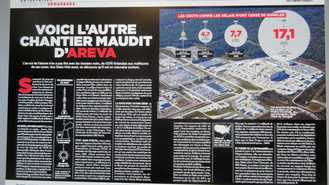
As part of its reporting on financial problem of the French company AREVA, the French magazine “Capital” reports on AREVA’s problems with the failed US MOX project in its January 2017 edition
voici l’autre chantier maudit d’Areva
L’ex-roi de l’atome n’en a pas fini avec les dossiers noirs, de l’EPR finlandais aux malfaçons de ses cuves. Aux Etats-Unis aussi, on découvre qu’il est en mauvaise posture.
Note the stunning graphic – increase in costs of MOX plant construction from $1.4 billion in 2005 to $17.1 billion in 2016 (with a finish date of 2048).
Congress has kept the MOX project on a shut-down track by providing just enough money to keep it on life support in 2017. The $340 million/year it’s getting is far below what the project needs to be viable even if the daunting design and construction problems can be solved. In 2017, investigations into waste, fraud abuse and mismanagement by those at DOE/NNSA/Shaw/CB&I AREVA MOX Services/Superior Air Handling are urgetly needed. Why are Senator Lindsey Graham and Representative Joe Wilson blocking such needed investigations?
DOE has just issued regulations which give more protection to whistelblowers – time for more MOX workers to come foward and reveal what you know about waste, fraud, abuse and mismanagement at the project. See Federal Register notice of December 27, 2016 linked here. From the notice:
Specifically, this rule clarifies the definition of ‘‘DOE Nuclear Safety Requirements’’ and clarifies that the prohibition against whistleblower retaliation is a DOE Nuclear Safety Requirement to the extent that it concerns nuclear safety.—–
“You clicked it: Aiken Standard’s top online stories of 2016”
December 27, 2016 article linked here
Stand by for release of documents – or not – by SRS, in response to our Freedom of Information Act (FOIA) request on the drone scare. if nothing of substance is provded we’ll follow the process to legally appeal.
—–

“Plug pulled on costly Monju fast-breeder reactor project”
Asahi Shimbun, December 21, 2016, article linked here
Will anyone be held accountable for the Monju situation? Japan has been repeatedtly advised for over 30 years to halt this dead-end plutonium proliferation project. Likewise, who in DOE/NNSA/Shaw/CB&I AREVA MOX Services/Superior Air Handling be held accountable for the US plutonium debacle – MOX? Those profiting off these situations are happy for feckless politicians and officials who stand by with their hands in our empty pockets.
—–

– Ahaus, Germany doesn’t want commercial spent fuel from Jülich – and neither do we, but for special interests who are out to profit off waste dumping, SRS remains an option
WDR radio, December 21, 2016 – linked here
Given the technical, legal and political challenges to moving, processing and dumping the waste, it should stay at the Jülich research center. SRS Watch will remain opposed to this half-baked scheme and we predict that the least-worst option will be pursued: construction of a new storage facility for the waste in question – AVR reactor spent fuel, in the form of graphite balls impregnated with uranium – at Jülich
—–
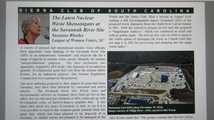
by Suzanne Rhodes, League of Women Voters, SC
— in South Carolina Sierra Club’s 2017 Winter Congaree Chronicle – posted December 20, 2016 and linked here
—-

“A date for issuance of the final EA was not available at the time this status report was prepared.”
— see November 2016 status update
“ENVIRONMENTAL IMPACT STATEMENTS (EISs) and ENVIRONMENTAL ASSESSMENTS (EAs) INVOLVING THE SAVANNAH RIVER SITE (SRS)” – linked hereAs there are elections in Germany in 2017 on both the federal level and in North Rhine-Westfalia, where the spent fuel is now stored, we expect little to happen on this matter in the near future. It will be interesting to see if any German political parties will propose the needless and costly transport of highly radioactive spent fuel on the highways at a time of increased terrorist threats.
Source of photo – protest at Jülich Research Center, where AVR spent fuel is stored: Tim Christensen, Robin Wood (https://aktiv.robinwood.de/index.php/s/xPUOCmutWWK0IMI)
—–

by Gregory Jones, December 15, 2016
Conclusion: “Plutonium decay heat even from plutonium with a high Pu 238 content is not an impediment to the use of this plutonium in simple unboosted implosion nuclear weapons.”
DOE photo: plutonium oxide at Los Alamos National Lab
—–
Abandon plutonium fuel MOX approach:
“Cuts to the Fissile Materials Stockpile – The Final Countdown”
Union of Concerned Scientists blog, December 12, 2016 – linked here
—–

SRS Watch director Tom Clements is one of those interviewed in the film.
PBS says: “Explore our attempts to plan for our radioactive future and the startling failure to manage waste in the present. Left over from the Cold War are a hundred million gallons of radioactive sludge, covering a vast amount of land.”
See news release on Containment here
For more information abotu the film, see: http://www.pbs.org/independentlens/films/containment/
—–
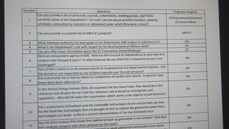
The list of 74 transition questions to DOE is linked here. While we would be concerned if there is a planned purge of officials concerned about climate change, why are there no questions about the MOX boondoggle at SRS?
Of all DOE programs for which their must be accountability, the mismamanged MOX project ranks number 1. So far, nobody has been held responsible for problems with the massively over-budget project.
Officials at DOE/NNSA/Shaw/CB&I AREVA MOX Services/Superior Air Handling (rumored to have botched the HVAC work) must be held accountable for the failed $17-billion MOX plant construction project!
—–

German radio on December 9, 2016 reported on local opposition to movement of highly radioactive commercial spent fuel from the Jülich
site to the Savannah River Site in South Carolina or the Ahaus storage facility.Here’s one report: “Jülich alliance against Castor transports”“Jülich Bündnis weiter gegen Castor-Transporte” – Radio Rur
Construction of a new storage facility at the Juelich site for gas reactor graphite spent fuel, rather than shipment to SRS of Ahaus, should have been pursued years ago. If such a facility had been pursued it would have already been finished. Transport of the spent fuel poses new security risks that must curtail its off-site shipment.
The release of DOE’s Environmental Assessment (EA) on the dumping scheme has been delayed throught 2016, with no indication it can ever be finished due to funding, political and technical issues. See listing of the EA status & other SRS environmental documents here.
photo: casks containg gas reactor commercial spent fuel, in the form of graphite balls, at the Jülich Research Center (Forschungzentrum Jülich)
—–
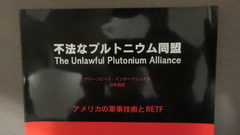
In honor of Senator John Glenn (1921-2016), who passed away this week, and his efforts to stop proliferation of “sensitive nuclear technology” (SNT) by the US to Japan and other countries, we recall SRS Watch staff involvement with him toward that end.
See “AMERICA’S SENSITIVE NUCLEAR TECHNOLOGY” (SNT) in the Congresional Record, April 5, 1995
– linked hereThe report mentioned by Senator Glenn in the Congressional Record – “The Unlawful Plutonium Alliance – Japan’s Supergrade Plutonium and the Role of The United States” – by Greenpeace International, 1994 – is linked here. Some of the reprocessing technology involved ws developed at the Savannah River Site nuclear weapons facility.
—-
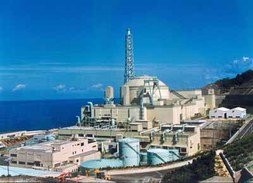
As we await the final, prolonged, agonizing, costly death of the Monju plutonium “breeder” reactor in Japan before the end of 2016, let us recall that some, like Greenpeace International, have been calling for termination of the reactor for over 20 years. As we well know given the MOX boondoggle at SRS, some misguided plutonium-proliferation projects take decades to die and don’t do so until the tax payer’s purse has been unscrupulously drained.
For background on this disturbing Monju situation, see the historic report
“THE SAFETY OF FAST BREEDER REACTORS: THE NEW THREAT OF MONJU; SUMMARY OF REPORT ON THE SAFETY OF THE MONJU BREEDER REACTOR”
24 March 1994, Tokyo/Fukui City
Japan Times, December 1, 2016, news article on Monju’s demise:
“Japan to draft ‘strategic’ plans for developing fast reactor”
—–

WASHINGTON – The U.S. Nuclear Regulatory Commission (NRC) is abandoning its own staff’s proposal to withhold public disclosure of information regarding proposed and approved nuclear exports, including of nuclear weapons-usable material, according to a reply from the Commission to a complaint by the Nuclear Proliferation Prevention Project (NPPP) at the University of Texas at Austin.
—–
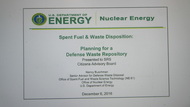
At the SRS Citizens Advisory Board meeting on December 6, 2016, a DOE Office of Nuclear Energy official updated the CAB on the state of affairs with removal and “disposal” of high-level nuclear waste from SRS and other DOE and commercial sites.
The presentation “Spent Fuel & Waste Disposition: Planning for a Defense Waste Repository” focused on DOE efforts for a stand-alone repository for high-level nuclear waste managed at DOE site. The presentation – linked here – and lengthy Q&A session with the CAB and public revealed that DOE’s plans for consent-based siting of HLW repositories is far from a fully developed concept.
Be alert to DOE’s release in the coming days of its report on the way foward with DOE HLW and commercial spent fuel disposal. As the siting of one facility will be hard enough the proposal to have separate geologic repositories for commercial spent fuel and DOE HLW could double siting headaches and costs.
Crazy, half-baked schemes for commercial spent fuel “interim” storage or long-term disposal – such as the one by the Aiken, SC-based “Spent Fuel Reprocessing Group” (SFR Group) – may emerge so be on guard for ill-conceived proposals by those motivated solely by profiting off the troubling situation with HLW. (See here for September 27, 2016 group news release and other information against the SFR Group scheme).
—–
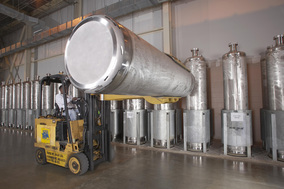
HLW canisters filled in Fiscal Year 2017 (started on October 1, 2016): 30
HLW canisters filled to date: 4133 (all stored on site)
The SRS Liquid Waste System Plan, Revision 20, dated March 2016, states that 8117 total canisters will be filled – see page 44 – but we beleive this number to be low
.The content of these cansiters is designated to be high-level nuclear waste and thus legally required under the Nuclear Waste Policy Act to go into a geologic repository. Vitification at SRS of HLW began in 1996 in the Defense Waste Processing Facility (DWPF) and generally seems to have performed well in it’s essential mission to solidify and containerize the highly radioactive of the orginal 51 HLW tanks. 8 tanks are now “closed” – mostly cleaned of rad waste and filled with conrete and left to degrade in place – and others are in various states of closure or reduced use.
Meanwhile, efforts to deisgn, construct and build a vitrification plant – Waste Tretment Plant (WTP) – at DOE’s Hanford site have been a costly failure. The WTP project and the MOX project at SRS top the U.S. Government’s historic list of mega-boondoggles. Investivations into both projects for waste, fraud, abuse and mismanagment are urgently needed and decision-makers and contractors (like CB&I AREVA MOX Services and Superior Air Handling – for MOX) must be held accountable.
—–

“(U) TA-55 and Sigma Overview”
Document linked here – LA-UR-16-29084, Nov. 30, 2016
“Mission Statement” in document about the plutonium operations at LANL: “Managed by the Plutonium Science and
Manufacturing Directorate (AD-PSM), the
TA-55 Plutonium Facility (PF-4) provides
world-class, safe, secure, and reliable
special nuclear material (SNM) research,
process development, technology
demonstration, and manufacturing
capabilities that support the nation’s
defense, energy, and environmental needs.”
Note – of interest to SRS & investigations into watse, fraud, abuse and mismanagment and why the MOX project collapsed: The “Advanced Recovery and Integrated Extraction System
(ARIES)” process mentioned on page 11 is producing plutonium oxide (powder) that was to be used to make fuel pellets for the failed MOX project. As far as we’re aware, no plutonium oxide from ARIES has been shipped to SRS, revealing more delays and schedule woes for the MOX boondoggle. If there have been shipments please let us know: srswatch@gmail.com—–

“A chilling nightmare plays out at a Titan II missile complex in Arkansas in September, 1980. A worker accidentally drops a socket, puncturing the fuel tank of an intercontinental ballistic missile carrying the most powerful nuclear warhead in our arsenal, an incident which ignites a series of feverish efforts to avoid a deadly disaster. Directed by Robert Kenner (FOOD, INC.) and based on the critically acclaimed book by Eric Schlosser (FAST FOOD NATION), COMMAND AND CONTROL is a minute-by-minute account of this long-hidden story. Putting a camera where there was no camera that night, Kenner brings this nonfiction thriller to life with stunning original footage shot in a decommissioned Titan II missile silo. Eyewitness accounts — from the man who dropped the socket, to the man who designed the warhead, to the Secretary of Defense— chronicle nine hours of terror that prevented an explosion 600 times more powerful than Hiroshima.”
Recall that the nuclear warhard in the near mishap had tritium produced at SRS and the plutonium may have een produced at SRS as well (in one or more of the now-closed five military production reactors at the site).
—-

U.S. Department of Energy news release, December 5, 2016:
United States Commits to IAEA Monitoring for the Verifiable Disposition of Six Metric Tons of Surplus Plutonium
Secretary of Energy Ernest Moniz Announces U.S. Commitment at International Conference on Nuclear Security
VIENNA — In remarks to the delegates of an event hosted by the International Atomic Energy Agency (IAEA), U.S. Secretary of Energy Ernest J. Moniz today announced in Austria that the United States is beginning consultations with the IAEA to monitor the dilution and packaging of up to six metric tons of surplus plutonium at the Savannah River Site (SRS) in Aiken, South Carolina.
At 10:57 a.m. on Dec. 5, DOE finally posted the release here
DOE photo of “9975” plutonium storage barrels drums high in the old K-Reactor at SRS
—–
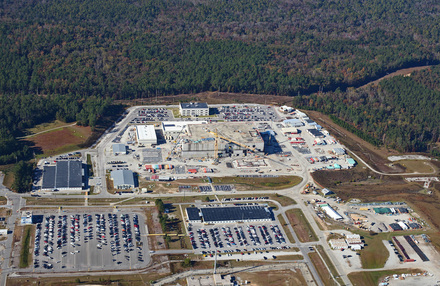
Augusta (Georgia) Chronicle, Dec. 2, 2016
Tom Clements, director of nuclear watchdog group SRS Watch, said the funding falls short of what MOX needs.
“The authorization of $340 million for FY 2017 is a level that keeps the project on a shut-down track as it’s far below what’s needed to move the project forward,” Clements said. “It is a stinging defeat for Representative Joe Wilson and Senator Lindsey Graham that they have not been able to get the project off a life-support funding level.”
According to Augusta Chronicle archives, construction on the plant began in 2007 and its initial cost was projected at $1.7 billion. Contractors say the site is nearly 70 percent complete and would require another $3 billion to finish.
John MacWilliams, associate deputy secretary of the U.S. Department of Energy, said in September that the project has had “very significant cost overruns and delays” and should be replaced with an alternative method. MacWilliams said the life-cycle cost of MOX ranges from $30 billion to $50 billion. The plant was supposed to be operational by Jan. 1 of this year, but some reports estimate the plant might not start up until 2048, MacWilliams said.
The bill also calls for the U.S. Army Corps of Engineers to assess the contract for the construction, management and operations of the MOX facility.
“As the Corps of Engineers has already come up with a cost of the MOX plant that is not sustainable, I would expect their assessment of the MOX contract to be quite tough, especially as it would have to review design and construction problems,” Clements said. “As a result of the contract review by the Corps of Engineers, I would imagine that MOX Services would not accept inevitable contract changes detrimental to them and that would end in termination of both their contract and the overall project.”
MOX plant photo, Nov. 10, 2016, can be used with this credit: “©High Flyer – 2016, special to SRS Watch”
—–
Most recent filings in federal court of State of South Carolina vs DOE and NNSA on removal of plutonium from the state – dated November 28, 2016
1. PLAINTIFF SOUTH CAROLINA’S MOTION FOR RECONSIDERATION
2. THE STATE OF SOUTH CAROLINA’S MEMORANDUM IN SUPPORT
OF MOTION FOR RECONSIDERATION
“CONCLUSION
For the reasons set forth above, this Court should amend its Order to apply the proper jurisdictional analysis under the APA and find that this Court has jurisdiction over, and that the Federal Defendants have waived their sovereign immunity with respect to, all of the State’s requests for relief to remedy the Federal Defendants’ unlawful inaction. In the alternative, this Court should find that it has jurisdiction over the Secretary for all the State’s requests for relief. The Court should also amend its Order to remove any discussion of 28 U.S.C.A. § 1500.”
DOE/NNSA have until December 15, 2016 to respond: “MOTION for Reconsideration re 56 Order on Motion to Dismiss by State of South Carolina. Response to Motion due by 12/15/2016. (Attachments: # 1 Memo in Support)No proposed order.(Lowell, Randy) (Entered: 11/28/2016)”
—–
“Who killed the US-Russia plutonium agreement, and does it really matter?”
Bulletin of Atomic Scientists, December 1, 2016 – linked here
“If a nuclear security agreement dies, but it wasn’t really about the nuclear security, does it matter who killed it? That depends on whom you ask.”
Check out the amended Plutonium Managment and Disposition Agreement. Take a look at Articke IX.6 – Congress has not appropriated enough money to make the MOX debacle sustainable (ignoring chronic design & construcion problems and no MOX customers). Given insufficient funding, an argument can be made that the US stepped back from the agreement due to Congress keeping the project on a shut-down level of fuinding long before Russia pulled out of it.
—-
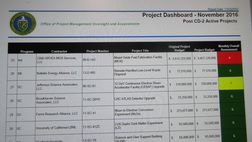
MOX RED ZONE ALERT (yet again) – MOX Boondoggle Remains in DOE & Congressionally Approved Free Fall
DOE’s Contract with CB&I AREVA MOX Services for the MOX Debacle Fosters Financial Abuse & Needs to be Terminated, Right?!
Are DOE’s Office of Project Management Oversight and Assessments and Office of Acquisition Management
chronically incompetent in manging construction of the MOX plant at SRS?Note in the November 2016 “Project Dasboard” that the “Project Budget” for construction of the “Mixed Oxide Fuel Fabrication Facility (MOX)” is listed as being $4,857,129,000. Given that the project is far over this budget, how can it be allowed to drag on and on with this false cost being presented to US tax payers? While the “Monthy Overall assesset” remains chonically in the red zone (“Project is expected to breach its Performance Baseline cost, schedule, or scope.”) just who is actually monitoring the MOX debacle to make sure that the project is either no longer over budget or that it’s terminated?
A DOE Office of Inspector General MOX audit report in 2014 pointed out in 2014 that “The National Nuclear Security Administration (NNSA) and MOX Services have been largely unsuccessful in controlling the cost and schedule for the MOX Facility.” and “
The anticipated cost and time required to complete the MOX Facility were significantly underestimated due to a number of factors.” Nothing appears to have changed since that assessment.Despite the big red flags flying over the MOX project for many years, there is no demonstrated effort or success by the Office of Project Management Oversight and Assessments or the Office of Acquisition Management to get costs for the MOX debacle under control. While there was supposed to be a new official baseline cost estimate why isn’t it posted so the public can see it? We would love to be proved wrong in that assessment so let us know if DOE/NNSA has been able to wrestle the CB&I AREVA MOX Services beast to the ground.
The DOE’s Office of Acquisition Management (MA-60) may well be a main source MOX mismanagment problems but is anyone in that office or any other DOE or NNSA being held accountavble for the MOX project being allowed to run totally out of control for the last decade? Congress is keeping MOX on the shut-down budget of $340 million but DOE needs to step up to the plate and exercise control and kick failed contractors, starting with CB&I AREVA MOX Servcies, off the project.
Where are the urgently needed investigations into waste, fraud, abuse and mismanagment by DOE/NNSA/Shaw/CB&I AREVA MOX Servcies/Superior Air Handling (HVAC contractor) and other contractors?????
—-
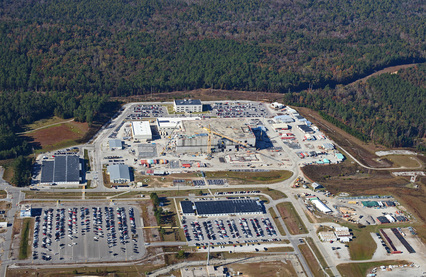
MOX boondoggle takes a hit with Armed Services language, Nov. 29, 2016 — Going, Going, Almost Gone….
Attention MOX Ripoff Artists: Your Days are Numbered!
— see conference report that goes with “National Defense Authorization Act for Fiscal Year 2017” (NDAA) – to be voted on on Dec. 2?
http://docs.house.gov/billsthisweek/20161128/CRPT-114HRPT-S2943.pdf
The NDAA report language on MOX requires the US Army Corps of Engineers to review the contract with CB&I AREVA MOX Services and suggest changes the contract as needed. That review ain’t gonna end up well for MOX Services when the Corps starts digging into the contract and lurking design and construction problems and waste, fraud, abuse and mismanagement.
more House Armed Service NDAA documents linked here
The NDAA authorizes the $340 million for MOX – a shut-down funding level. This is a strategic blow by Armed Services to MOX boosters Senator Lindsey Graham and Representative Joe Wilson, who failed to get the funding incresed beyond the termination level and who have utterly failed to even atteptmt to make any case that the MOX debacle is viable.
Photo from Nov. 10, 2016 can be used with this credit: “©High Flyer -2016, special to SRS Watch”
—–
“The $50 Billion Earmark: Time to Cut Our Losses”
Breaking Defense, November 30, 2016
“Buried in the fine print of the defense authorization bills is a $50 billion earmark for an obscure facility in South Carolina. The facility, called the Mixed Oxide Facility or “MOX”, is a classic example of a good idea gone awry. Initially estimated to cost $1 billion to $2 billion, MOX is now estimated to cost $50 billion. On top of that, the Russians have just withdrawn from the arms control agreement on which MOX is based. So why is Congress funding this?”
“As the Congress finalizes an authorization bill, it should do what many of its own members, Democrat and Republican, have advocated: put the facility into cold storage and just keep the plutonium where it is. There is no way the U.S. taxpayers will pay $50 billion over four decades to complete it. Eventually, the Congress will terminate it. The nation has already wasted $5 billion on a good, but failed, idea. It’s time to cut our losses and move on.”
Friends of the Earth 2013 video ad on MOX debacle is still timely – linked here & in photo above: https://www.youtube.com/watch?v=d2PTwods3Y4
—-
SRS Watch in: “Watchdog group looking for answers in Savannah River Site drone investigation”
Aiken South Carolina) Standard, November 28, 2016
SRS Watch filed a Freedom of Information Act (FOIA) request about the drone scare stimulated by SRS in the summer of 2016 – SRS confirmation of receipt of FOIA request, Nov. 28, linked here
and substance of SRS response here:
“This is in response to your November 14, 2016 FOIA request for (1) all documents and reports, and attachments, pertaining to drone overflight of SRS during 2016; (2) all photos taken of any drones over SRS during 2016; and (3) all documents, reports, analyses about the legality of drone overflight over SRS.”
—–

Union of Concerned Scientists blog, November 22, 2016 – linked here
DOE photo: old K-Reactor at SRS, where 13 metric tons of surplus weapon-grade plutonium are now stranded
—–
On November 18, 2016 the Savannah River Site affirmed that the long-delayed “Environmental Assessment” on the scheme to import and dump commercial German spent fuel at SRS has been delayed yet again.
See “SRS October 2016 NEPA Monthly Status Report” linked here
“A date for issuance of the final EA was not available at the time this status report was prepared.”
Given legal, technical and hurdles in Germany, the US dumping option slips but remains alive. With lack of funding from Germany, R&D into processing and dumping of the spent fuel by Savannah River National Lab languishes. Hmmm, looks like making a buck off this deal and not nuclear non-proliferation has been the main motivator by some at SRS….
—–
The United Kingdom’s plutonium-stockpiling madness continues as weapon-usable plutonium stockpile hits a stunning 129.4 metric tons as of 31 December 2015!
It’s time for the UK to admit that pursuit of MOX is a dead end – as we see on a daily basis with the US MOX debacle – and get on with immobilizing this plutonium as the nuclear waste it is.
see the UK’s Office of Nuclear Regulation’s “Annual figures for holdings of civil unirradiated plutonium as at 31 December 2015,” linked here
—–

“Time to tackle the UK’s plutonium mountain”
– via immobilization (which never should have been discarded for use at SRS with US plutonium – time to revive it?)
University of Sheffield, 15 November 2016, news release linked here
report Plutonium management policy in the United Kingdom: The need for a dual track strategy – linked here
Report Highlights
• Policy and technology developments in US plutonium disposition programme are analysed.
• The vulnerabilities of the UK policy for plutonium reuse as MOX fuel are assessed.
• Adoption of dual-track approach to management of UK plutonium is recommended.
“The heavily over budget and delayed US MOX Fuel Fabrication Facility is based on the same reference design as a potential UK plant. So there is an urgent need to review the design basis assumptions and cost data for a UK MOX fuel fabrication plant, in the light of the US experience.”
—–
SRS Watch in: “Nuclear isotope facility would bring low-enriched uranium to SRS”
Aiken (South Carolina) Standard, November 10, 2016 – article linked here
Link to the draft EIS on the Northwest Medical Isotopes facility at the University of Missouri research reactor
Federal Register notice on DEIS is here, Nov. 9:
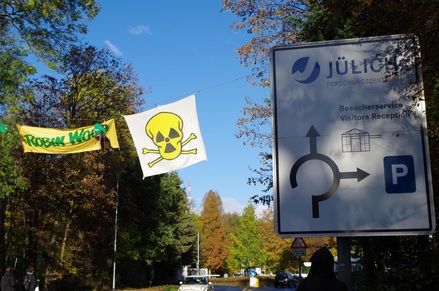
No dumping of German commercial spent fuel (high-level nuclear waste) on SRS!
Good to see another action in Germany against transport of German spent fuel from the Jülich Research Center (FZJ) to SRS or the Ahaus facility (also in the same state, North Rhine-Westphalia) – action at main entrance of FZJ, near the city of Jülich, Germany – November 3, 2016
news article linked here: “Widerspruch gegen Aktivisten bei Protestaktion”
Aachener Nachrichten – Aaachen News – Aachen, Germany. November 4, 2016
Source of photo above: Tim Christensen, Robin Wood (https://aktiv.robinwood.de/index.php/s/xPUOCmutWWK0IMI)
for more photos see SRS Watch Facebook page: https://www.facebook.com/SavannahRiverSiteWatch
FZJ and $pecial intere$t$ at US DOE and SRS should not push forward with the illegal dumping scheme and bring the pursuit of it to a halt.
—–

Rock Fall Causes Precautionary Evacuation of WIPP Underground
Employees evacuated the Waste Isolation Pilot Plant (WIPP) underground around 2:30 p.m. (MT) today in response to a reported rock fall. There were no injuries and no release of radiological contamination.
news release linked here, on WIPP Update home page: http://www.wipp.energy.gov/wipprecovery/recovery.html
DOE photo: machine used by DOE to place long bolts into the ceiling at WIPP, to slow the natural collapse of the roof of the salt mine; this machine was observed by SRS Watch on an underground tour of WIPP on October 1, 2016
—–

False alarm: security alert at SRS on the later afternoon of November 2. Just overly cautious or bogus? In any event, it was quickly over so now, back to drone scares and harvesting tax payer money via the MOX $cam….
Savannah River Site – News Release #1
For Immediate Release
Date: 11/02/2016 Time:1632
Aiken, S.C.—A security event is in progress that has triggered emergency response activities at the Department of Energy’s Savannah River Site.
This message is being sent to you as part of our emergency response organization information process.
At this time, there is no indication of a consequence beyond the Savannah River Site boundaries.
When more specific information is available, including further media contact information, it will be provided to you through the Site’s public information staff.
11/02/2016 NR#1
—–
Savannah River Site – News Release # 2
For Immediate Release
For more information call: (803) 725-6211
Date: 11/02/2016 Time: 1738
AIKEN, S.C.— This is a follow up to the emergency declared at the Savannah River Site (SRS) earlier today.
The All-Clear has been given at SRS.
A suspicious item was discovered at the Savannah River National Laboratory which prompted the emergency response activities. After thorough investigation, the suspicious item was determined to be non-threatening and the Site has been returned to normal operations.
11/02/2016 NR# 2
photo: SRS fire/rescue vehicle – was it used to investigate false security alarm (possibly in an A-Area bathroom)? – from SRS photos on Flickr: https://www.flickr.com/photos/51009184@N06/
—-
Aiken (South Carolina) Standard, November 1, 2016
>>>>> United States District Court “
ORDER AND OPINION” in State of South Carolina vs DOE, by Judge Michelle Childs, Columbia, South Carolina,October 31, 2016, linked hereIII. CONCLUSION [on page 31 of ruling]
For the foregoing reasons, the court declines to rule on Defendants’ Motion to Dismiss (ECF No. 17) for failure to state a claim for which relief could be granted as to the removal claim under Fed. R. Civ. P. 12(b)(6) until supplemental briefs, herein described are submitted. The parties are DIRECTED to file briefs that address the following issues:
1. Whether the court should transfer the monetary claim to the CFC, pursuant to 28 U.S.C. § 1631.
2. Whether the court should dismiss the monetary claim without prejudice to the State’s ability to refile the claim in an action in the CFC [Court of Federal Claims].
The briefs shall comply with rules governing memoranda in Local Civ. Rule 7 (D.S.C.) and must be filed by November 30, 2016.
IT IS SO ORDERED.
link to “Order and Opinion” in
Civil Action No. 1:16-cv-00391-JMCphoto: Paul Palmer, ©Sierra Club and Carolina Peace Resource Center, outside federal courthouse in Columbia, SC, June 30, 2016
—–
SRS Watch expresses skepticism over high-level nuclear waste agreement between DOE and the State of South Carolina:
“DOE, DHEC reach agreement on SRS liquid waste”
Augusta (Georgia) Chronicle, November 1, 2016
article linked here
“DHEC announces deal to clean up radioactive waste from tanks at Savannah River Site”
The State, Columbia, South Carolina, Nov. 1, 2016
Copy of US DOE – South Carolina Department of Health & Environmental Control (DHEC) agreement linked here – October 31, 2016 – has what appears to be many loopholes and some disturbing language about “cesium-laden” waste being disposed of as non-HLW off site
photo: top of SRS high-level waste tanks
—–
